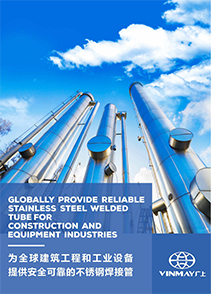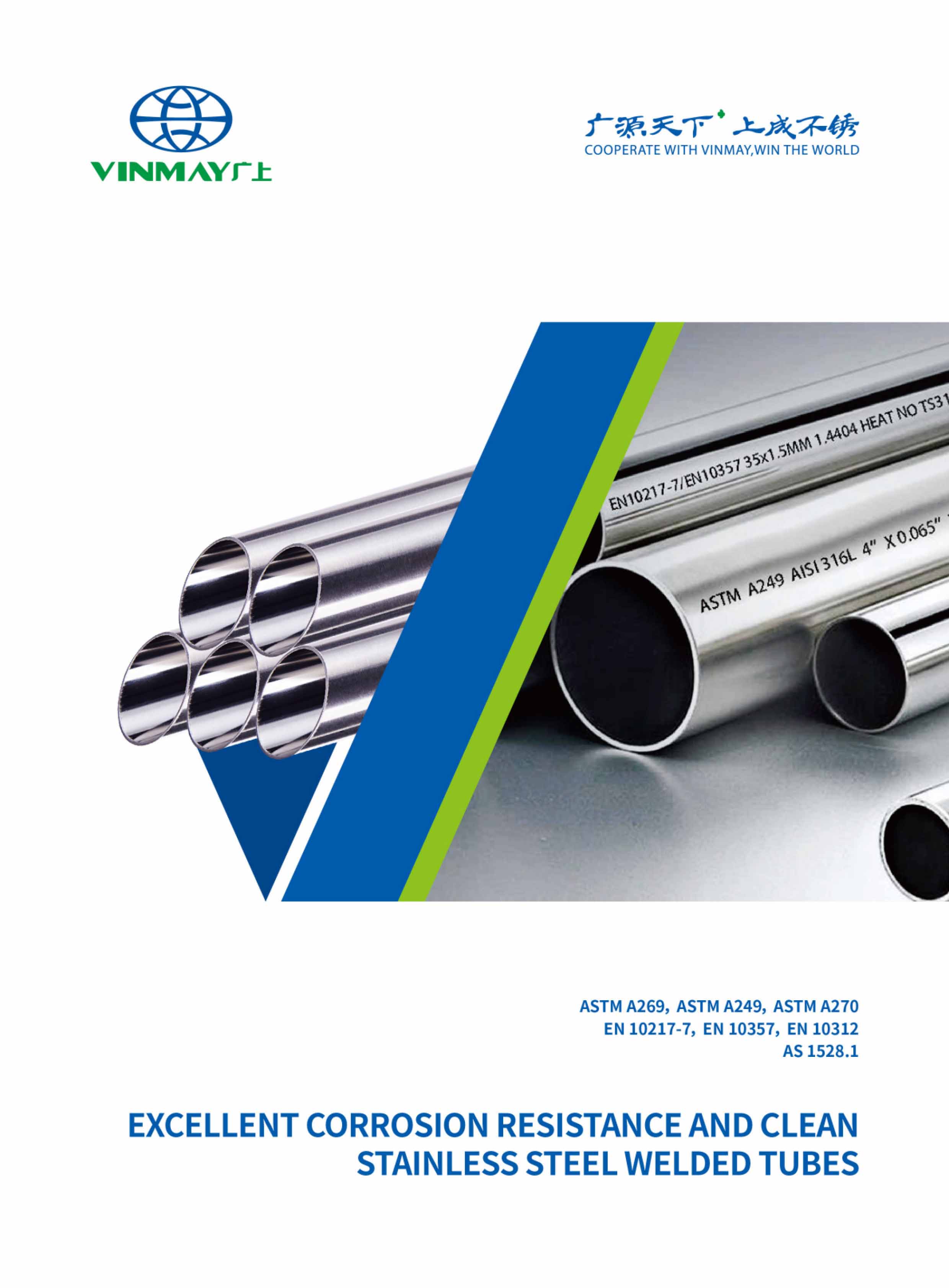Architectural stainless steel tubes blend structural integrity with aesthetic versatility, making them ideal for both interior and exterior applications. They adhere to stringent industry standards, employing advanced techniques like laser cutting and TIG welding. Key types, including 304 and 316 stainless steels, offer unique benefits such as corrosion resistance and exceptional strength. These tubes are used in load-bearing structures, modern railings, and rainwater systems. Their durability, maintenance simplicity, and recyclable nature make them a sustainable choice. For those seeking more information on how these stainless steel tubes transform architectural projects into iconic designs, further details await.

Architectural stainless steel tube is a versatile, high-strength material used in modern construction and design for its durability and aesthetic appeal. Its inherent corrosion resistance makes it an ideal choice for both interior and exterior applications, guaranteeing longevity even in harsh environments. This material's durability is a key factor in its widespread adoption, adhering to stringent industry standards that ensure performance and reliability.
Fabrication techniques for stainless steel tubes have evolved greatly, allowing for precise and complex designs that meet the exacting requirements of architects and builders. Techniques such as laser cutting, TIG welding, and CNC machining enable the creation of intricate structures without compromising structural integrity. These methods ensure that each piece fits perfectly within a larger framework, offering both functional and visual coherence.
Considering the environmental impact, stainless steel is a sustainable choice due to its recyclability and long lifespan, reducing the need for frequent replacements. Its production and fabrication processes have been refined to minimize waste and energy consumption, aligning with modern environmental standards.
Architectural stainless steel tubes not only meet but often exceed the demands of contemporary construction and design, providing a blend of strength, beauty, and sustainability.
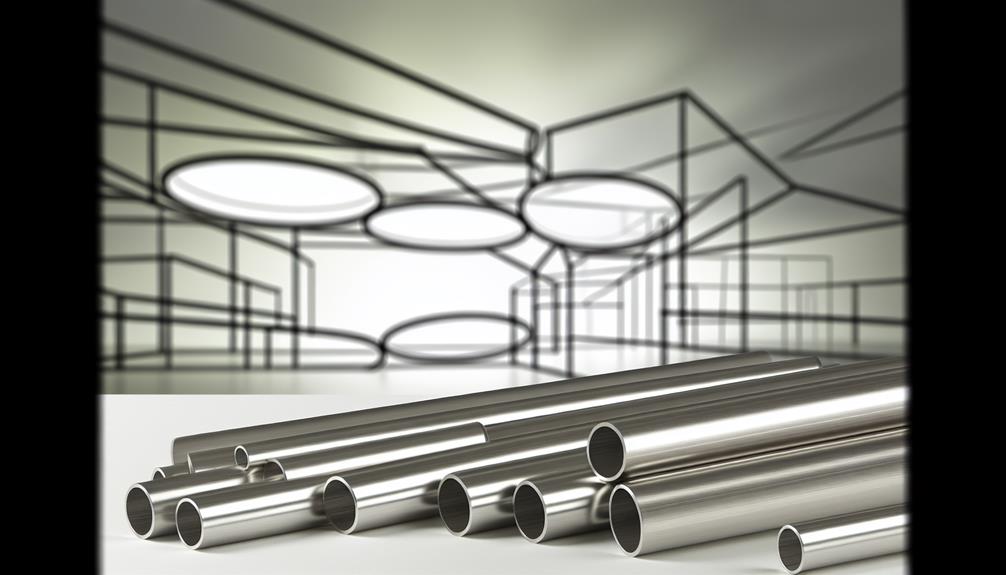
When it comes to architectural applications, not all stainless steel is created equal. The choice of stainless steel type can significantly impact the performance, longevity, and aesthetics of the final structure. Here, we explore the most commonly used types of stainless steel in architecture, each with its unique properties and suitable applications.
304 stainless steel is the most widely used type of stainless steel due to its excellent balance of strength, corrosion resistance, and affordability. It contains 18-20% chromium and 8-10.5% nickel, making it resistant to rust and corrosion in most indoor environments.
| Properties | Applications |
|---|---|
| Good corrosion resistance | Indoor frameworks: Ideal for structural elements within buildings that are not exposed to harsh weather. |
| Excellent tensile strength and durability | Railings and handrails: Provides a sleek and modern look while ensuring safety. |
| Aesthetic versatility (polished or brushed finish) | Furniture and fixtures: Commonly used in high-end furniture, kitchen appliances, and fixtures due to its attractive finish and durability. |
Related Articles:
316 stainless steel is known for its superior corrosion resistance compared to 304 stainless steel, making it ideal for environments with higher exposure to corrosive elements. It contains 16-18% chromium, 10-14% nickel, and 2-3% molybdenum, which enhances its resistance to chlorides and other industrial solvents.
| Properties | Applications |
|---|---|
| Enhanced corrosion resistance | Outdoor structures: Perfect for architectural elements exposed to the elements, such as façades, sculptures, and bridges. |
| High strength and toughness at both high and low temperatures | Marine environments: Commonly used in coastal architecture and marine construction where saltwater exposure is a concern. |
| Long-term durability | Industrial settings: Suitable for use in chemical plants, oil refineries, and other industrial environments where harsh chemicals are present. |
Related Article:
Duplex stainless steel combines the best properties of austenitic and ferritic stainless steel. It typically contains 18-28% chromium, 4.5-8% nickel, and up to 5% molybdenum, providing a higher resistance to stress corrosion cracking and improved strength.
| Properties | Applications |
|---|---|
| Superior strength | Bridges and infrastructure: Ideal for use in large-scale infrastructure projects requiring high strength and durability. |
| Excellent corrosion resistance | Chemical plants: Suitable for environments where both strength and resistance to corrosion from harsh chemicals are needed. |
| Cost-effective over long term | Architectural landmarks: Used in high-profile projects where both aesthetics and structural integrity are paramount. |
Architects and engineers favor duplex stainless steel for its excellent mechanical properties, allowing for reduced material thickness without compromising structural integrity. This efficiency translates into significant cost factors, making duplex stainless steel a cost-effective option for large-scale projects.
The material's compatibility with advanced welding techniques, such as gas tungsten arc and plasma arc welding, ensures seamless joints and aesthetic finishes, critical for visible architectural elements.
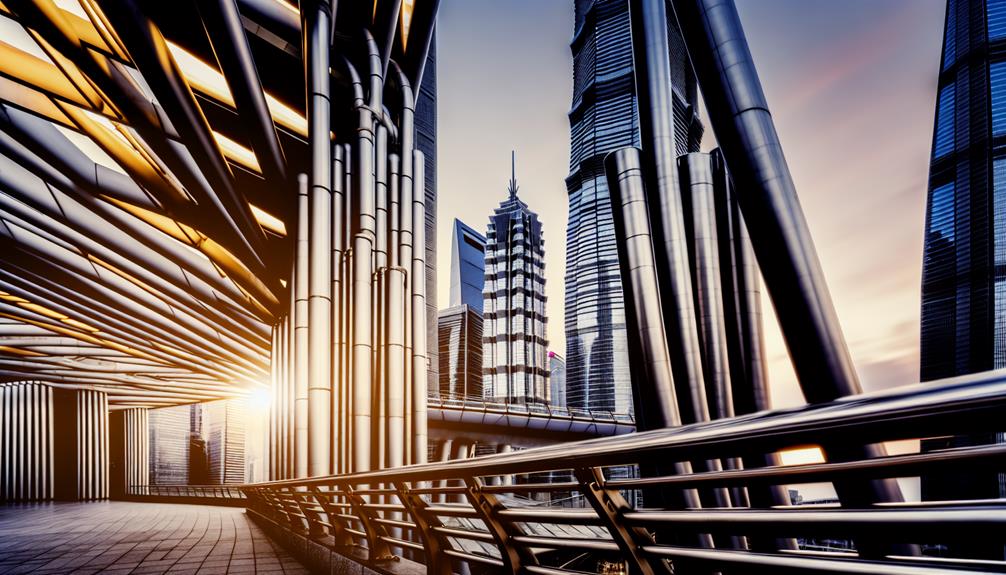
Stainless steel tubes are indispensable in the realm of architecture, offering a myriad of applications that blend functionality with aesthetic appeal. Let's explore how these versatile components play a crucial role in shaping modern built environments:
Stainless steel tubes serve as the backbone of many architectural structures, providing robust support and durability.
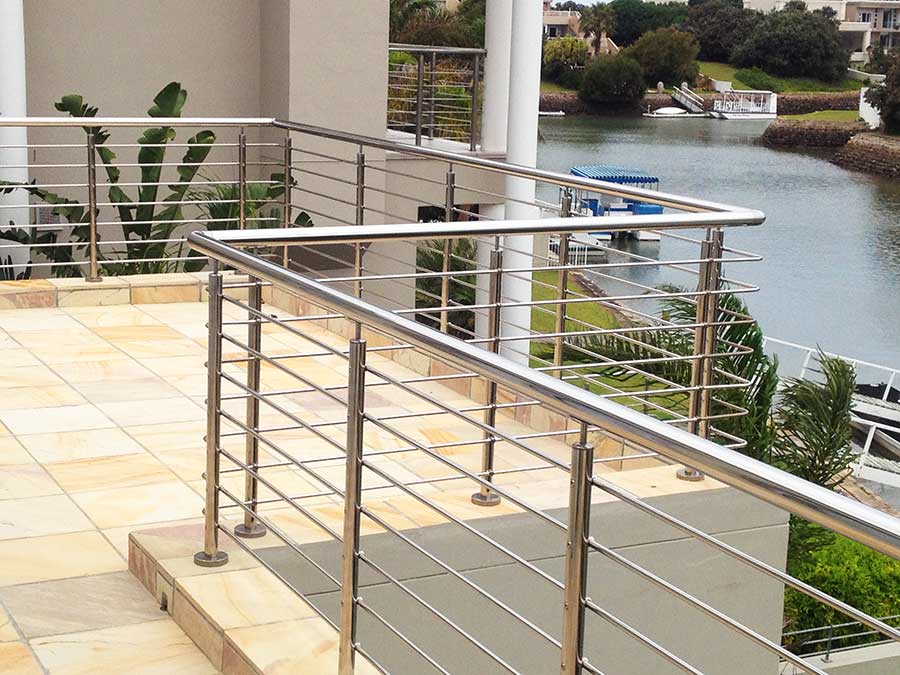
Beyond their structural prowess, stainless steel tubes add a touch of elegance and modernity to architectural designs.

In addition to their structural and aesthetic roles, stainless steel tubes serve practical functions within architectural systems.
In essence, stainless steel tubes are not mere building materials; they are design elements that contribute to the form, function, and visual appeal of architectural spaces. Whether in towering skyscrapers or intimate residential dwellings, their versatility and reliability make them indispensable in the hands of architects, designers, and builders alike.
Recommended:
Offering a blend of durability, corrosion resistance, and sleek aesthetics, architectural stainless steel tubes provide an ideal solution for modern construction and design. Their numerous advantages make them a preferred choice for architects and builders who prioritize both functionality and appearance.
First and foremost, the cost efficiency of stainless steel tubes can't be overstated. Despite the higher initial investment, their longevity benefits mean fewer replacements and repairs, translating to long-term savings. Corrosion resistance guarantees that these tubes withstand harsh environmental conditions, eliminating the need for frequent maintenance and enhancing their durability.
Moreover, the maintenance simplicity of stainless steel tubes is another significant advantage. They require minimal upkeep, retaining their lustrous finish with just occasional cleaning. As a sustainable material, stainless steel is recyclable and aligns with green building practices, supporting eco-friendly construction initiatives.
Key benefits include:

When considering the design of architectural stainless steel tubes, selecting the appropriate grade guarantees both structural integrity and aesthetic appeal.
Surface finishes play a pivotal role in achieving the desired look while protecting against environmental factors.
Proper integration with other materials and meticulous installation techniques are essential to maintain the design's overall coherence and durability.
Selecting the appropriate grade of stainless steel tube is essential for balancing aesthetic appeal, structural integrity, and long-term durability in architectural applications. The grade selection process hinges on understanding material durability, corrosion resistance, mechanical properties, and cost analysis.
For best results, architects and engineers should carefully consider the following factors:
Achieving the desired aesthetic and functional outcome in architectural projects requires careful consideration of the surface finishes for stainless steel tubes. Each finish offers distinct visual and tactile qualities, contributing to both the design language and structural performance of the installation.
A brushed finish provides a subtle, linear texture that reduces glare and fingerprints, making it suitable for high-traffic areas. This finish combines durability with a contemporary appeal, fitting seamlessly into modern designs.
In contrast, a mirror polish creates a highly reflective surface, ideal for applications demanding a sleek, luxurious look. This finish enhances light distribution and can visually enlarge spaces, though it requires meticulous maintenance to retain its pristine appearance.
A satin sheen offers a middle ground with a soft, matte luster that minimizes reflections while maintaining a sophisticated aesthetic. This finish is particularly favored in settings where understated elegance is paramount.
Textured surfaces introduce a tactile dimension, offering both visual interest and enhanced grip, which can be critical in handrails or exterior applications.
Finally, etched patterns provide bespoke detailing, allowing for custom designs that can personalize and elevate the architectural narrative.
Carefully selecting the right surface finish ensures both the practical and aesthetic objectives of the project are met efficiently.
Recommended: Hairline Finish Vs. Brushed Finish Vs. Satin Finish Stainless Steel Tube
Integrating stainless steel tubes with other materials requires a vital blend of aesthetic sensibility and structural pragmatism. This integration isn't only about juxtaposing materials but ensuring they complement and enhance each other's properties. It's essential to take into account how each material interacts with stainless steel regarding durability, maintenance, and visual appeal.
Recommended: Copper VS Stainless Steel Pipe
When planning the installation of architectural stainless steel tubes, one must carefully consider factors such as load-bearing capacity, alignment precision, and the impact of environmental conditions on material performance. Proper alignment is essential to guarantee structural integrity and aesthetic appeal. Utilizing advanced laser-guided tools can enhance accuracy and maintain the sleek, modern look that stainless steel promises.
Joint preparation stands as a cornerstone of successful installation. Each joint must be meticulously cleaned and aligned to facilitate strong, durable connections. Welding methods, such as TIG (Tungsten Inert Gas) welding, are preferred for their precision and ability to produce clean, smooth welds, which are essential in high-visibility architectural applications.
Tube sealing is another critical aspect. Specialized sealing compounds or mechanical seals should be employed to protect against corrosion and ensure longevity, especially in environments with high humidity or salt exposure.
Safety protocols must be rigorously followed to protect workers and maintain the integrity of the installation. Proper use of personal protective equipment (PPE) and adherence to safety guidelines during cutting, welding, and handling operations can't be overstressed.
Recommended: How to Weld Stainless Steel Tubing
Examining iconic structures like The Louvre Pyramid, The Hearst Tower, and the Sydney Opera House reveals the transformative impact of architectural stainless steel tubes.
Each case demonstrates the material's versatility in achieving both structural integrity and aesthetic elegance.
These examples highlight how stainless steel tubes can define modern architectural masterpieces.

How does the iconic Louvre Pyramid in Paris seamlessly integrate stainless steel tubing to achieve both structural integrity and aesthetic brilliance? Designed by I. M. Pei, this modern landmark exemplifies how innovative use of stainless steel can enhance both form and function. The pyramid's glass structure, supported by a framework of stainless steel tubes, creates an inviting and open environment that enhances the visitor experience.
The stainless steel tubing provides critical support for the pyramid's 603 glass panes, allowing for a minimalistic design that doesn't obstruct the view of the surrounding historic Louvre Museum. This fusion of modern and classical elements has a profound cultural impact, symbolizing the intersection of contemporary architecture with rich history.
This architectural feat demonstrates how stainless steel tubing can transform ambitious designs into enduring cultural icons.

In the heart of Manhattan, the Hearst Tower exemplifies how stainless steel tubing can revolutionize skyscraper design, combining structural strength with striking visual impact. The building's historical significance is rooted in its blend of the old and new, with a 1928 base supporting a modern, innovative superstructure.
The construction process showcased remarkable structural innovations, particularly the diagrid framework made of stainless steel tubing, which reduced the need for conventional vertical steel beams. This diagrid design not only provided superior structural strength but also allowed for larger windows, enhancing natural light and reducing energy consumption.
The environmental impact of the Hearst Tower was minimized through the use of sustainable materials and cutting-edge energy-efficient systems, earning it a LEED Gold certification. Design challenges were met head-on, particularly the integration of the new tower with the existing historical base.
The architects and engineers employed stainless steel tubing to create a seamless shift, maintaining the aesthetic integrity of both elements. This project illustrates how thoughtful design and advanced materials can overcome structural challenges while paying homage to historical architecture, resulting in a landmark that's both visually stunning and environmentally responsible.

The Sydney Opera House stands as a tribute to the essential power of architectural stainless steel tubing, seamlessly blending aesthetics and structural ingenuity. Designed by Jørn Utzon, the building's iconic sail-like shells were an engineering marvel of their time. Stainless steel tubes play a vital role in maintaining the structural integrity of these soaring forms, ensuring longevity and resilience.
The Opera House's design inspiration drew from natural elements, particularly the interplay of light and water, which is echoed in its stainless steel elements. This choice of material not only offers durability but also enhances the building's reflective quality, creating mesmerizing visual effects.
Historically significant since its completion in 1973, the Sydney Opera House has become a key tourist attraction and a cultural landmark synonymous with Australia. Its use of stainless steel tubes symbolizes innovation and forward-thinking in architectural practices.
The Sydney Opera House exemplifies how stainless steel tubing can elevate both form and function in monumental architecture.
One should clean frequently using suitable detergents, apply protective coatings, and avoid abrasives. Polishing methods enhance aesthetics while structural comprehension guarantees longevity. Regular maintenance guarantees control over the material's pristine condition.
Recommended: Polishing Stainless Steel Tubes
Common finishes for stainless steel tubes include mirror polish, brushed finish, satin finish, bead blasting, and hairline finish. Each offers distinct aesthetic and structural qualities, allowing precise control over the tube's final appearance and performance.
Stainless steel tubing excels in material longevity, corrosion resistance, installation ease, and aesthetic appeal, outperforming other materials. Although initially costlier, its superior structural integrity and minimal maintenance make it a cost-effective choice in the long run.
The environmental benefits of using stainless steel tubes include their recyclability benefits, energy efficiency in production, and waste reduction. Additionally, their long lifespan and sustainable sourcing contribute to a more eco-friendly and resource-conscious construction approach.
You should consider welding techniques, thermal expansion, and joint fittings to guarantee structural integrity. Load capacity, along with proper sealing methods, ensures durability and aesthetic appeal in architectural applications. Control over these factors assures successful installation.
Are you looking to elevate your architectural projects with high-quality stainless steel tubes? Look no further. At Vinmay, as a leading stainless steel tubing manufacturer, we leverage over 15 years of experience in manufacturing top-tier stainless steel tubing, including architectural stainless steel tubes and custom stainless steel tubes that blend technical precision with aesthetic excellence.
We produce a wide range of stainless steel pipes that adhere to international standards such as ASTM, EN, DIN, and AS. Whether you're working on decoration, water supply systems, food processing facilities, or any other application, our pipes are designed to meet your diverse needs.
At Vinmay, quality is our top priority. We follow stringent QC protocols and hold certifications like PED, AEO, and ISO, ensuring that every pipe meets the highest standards. Our advanced production capabilities, including 60 continuous forming lines and specialized workshops for polishing and annealing, guarantee precision and a superior finish.
Let's bring your architectural vision to life with stainless steel tubes that combine durability, functionality, and beauty. For inquiries and collaboration opportunities, contact us at rose@vinssco.com or visit our facility in Foshan City, Guangdong Province. Together, we can achieve extraordinary architectural feats.
